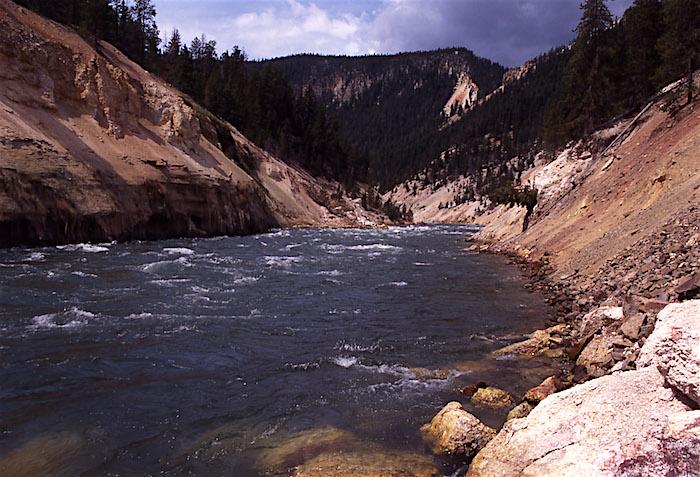
Yellowstone officials are hoping a fish-killing parasite in the Yellowstone River north of the park doesn't enter the park's waters/NPS file photo of the Yellowstone River at Seven Mile Hole by Jim Peaco
A parasite responsible for what Montana officials are calling an "unprecedented fish kill" in the Yellowstone River north of Yellowstone National Park has not been seen in the river inside the park and at this time no fishing closures have been ordered inside the park.
Yellowstone crews are monitoring the Yellowstone River and its tributaries inside the park’s northern boundary and have not discovered any dead fish, a park release said Friday.
In the past week, Montana Fish, Wildlife and Parks staff have documented more than 2,000 dead Mountain Whitefish on some affected stretches of the Yellowstone. "With that, FWP estimates the total impact to Mountain Whitefish in the Yellowstone to be in the tens of thousands. FWP has also recently received reports of the kill beginning to affect some Rainbow and Yellowstone Cutthroat Trout," the agency reported Friday.
Test results from samples sent to the U.S. and Wildlife Service Fish Health Center in Bozeman show the catalyst for this fish kill to be Proliferative Kidney Disease – one of the most serious diseases to impact whitefish and trout. The disease, caused by a microscopic parasite, is known to occur in Canada, the U.S. and Europe. It has been documented previously in only two isolated locations in Montana over the past 20 years. Recent outbreaks have occurred in Washington, Oregon and Idaho. In trout, research has shown this disease to have the potential to cause 20 to 100 percent mortality. The parasite does not pose a risk to humans.
Yellowstone officials are asking anglers to prevent spread of the parasite into the park by completely cleaning and disinfect their gear (waders, boots, float tubes, boats) before traveling to the park.
In addition, once anglers are done fishing at a site within Yellowstone National Park, they must remove all mud, sediment, vegetation and other debris from waders and boots before leaving that site and traveling to additional fishing locations within the park. All watercraft entering the park must be inspected by NPS staff prior to being launched. Fishing bait is not allowed in the park, and it’s illegal to transport live fish or move fish or other animals from one stream, lake, or pond in the park to another.



Add comment